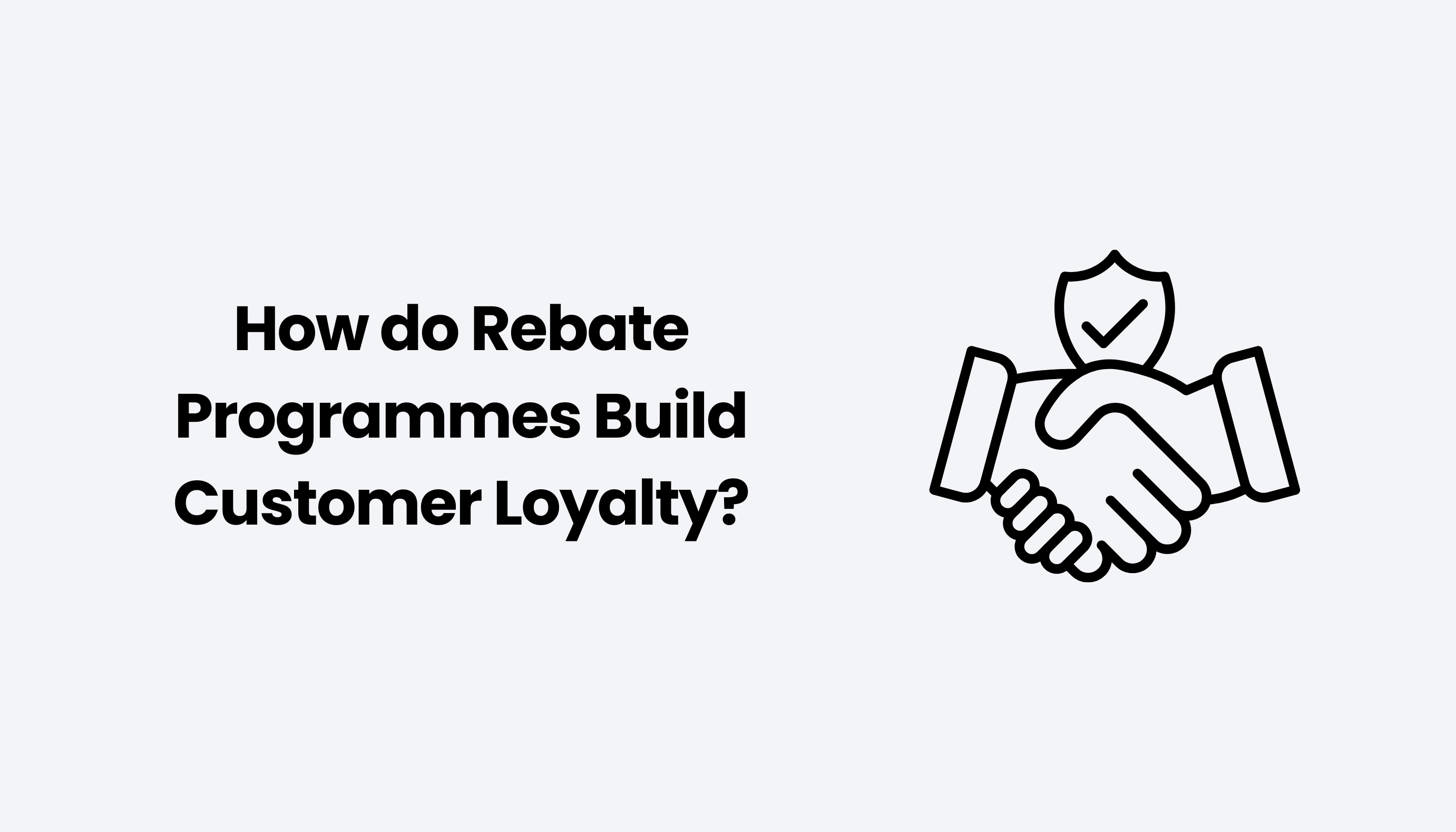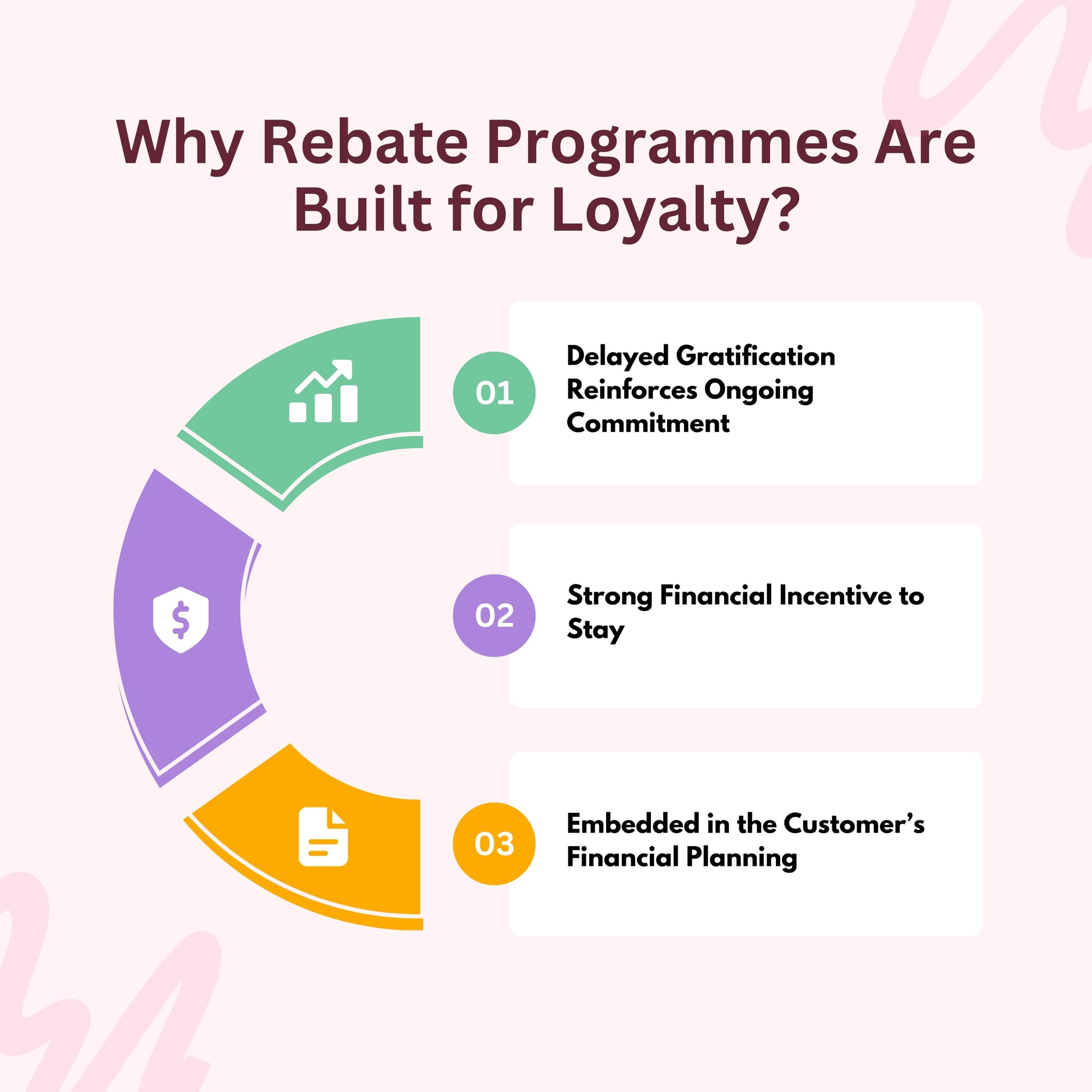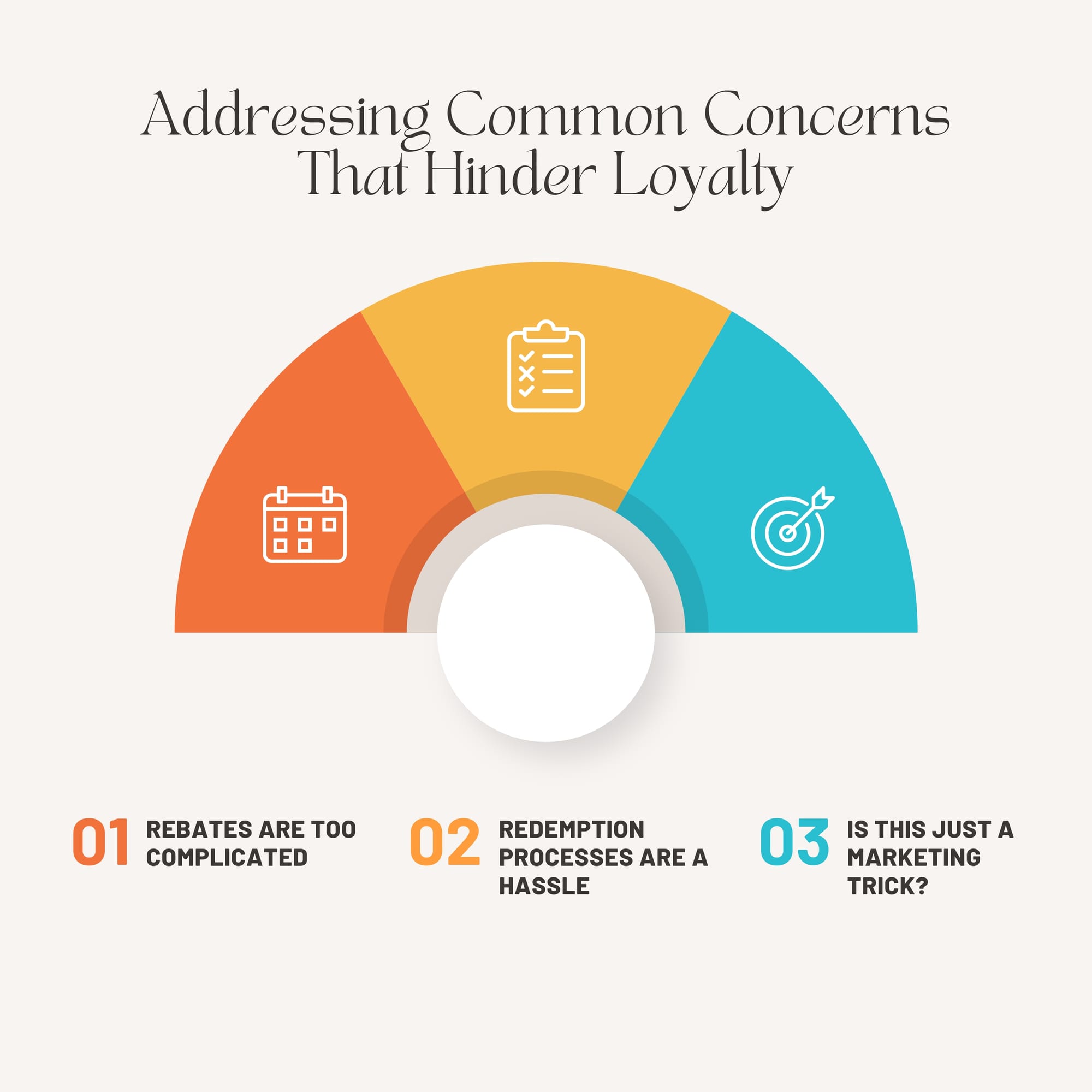How do Rebate Programmes Build Customer Loyalty?

Customer loyalty can be the difference between success and stagnation. One powerful yet often overlooked tool for cultivating loyalty is the customer rebate programme. While rebates are commonly associated with cost savings, their true value lies in their ability to build strong, long-lasting relationships between customers and suppliers. When structured correctly, rebates create a sense of dependability and mutual benefit that keeps customers returning. This blog explores how well-designed rebate programmes can not only reward customers but also foster sustained loyalty, driving repeat business and creating a foundation of trust.
Table of Contents:
- Why Rebate Programmes Are Built for Loyalty?
- Five Core Ways Rebates Build Loyalty
- Addressing Common Concerns That Hinder Loyalty
- Tools That Make Loyalty-Building Rebates Work
Jump to a section that interests you, or keep reading.
Why Rebate Programmes Are Built for Loyalty?

Delayed Gratification Reinforces Ongoing Commitment
Customer rebate programmes are structured around thresholds, such as spending a certain amount, hitting a growth target, or staying consistent over time, and rewards follow. This delay between action and benefit discourages short-term buying patterns. Instead of reacting to temporary discounts, customers stay engaged over entire quarters or fiscal years to reach rebate goals. This structure changes how customers view their relationship with the supplier, from transactional to strategic. The longer the cycle, the more incentive there is to stick with one vendor and consolidate purchases. It also makes switching mid-cycle less appealing, as it would mean forfeiting accrued rewards.
Strong Financial Incentive to Stay
Rebates return real money, not just symbolic rewards. For B2B customers managing tight procurement budgets, this makes a difference. The reward isn't a gift card or tier badge—it’s a direct reduction in net spend. Whether paid as a rebate check, invoice credit, or account balance, the outcome is the same: actual financial relief. These rebates are based on the customer's own actions, making the benefit feel earned, not promotional. That sense of value, linked directly to what they’ve bought and how they’ve performed, builds stronger ties than point-based systems or generic perks.
Embedded in the Customer’s Financial Planning
Rebate earnings don’t just arrive as a bonus—they become part of how procurement teams plan annual budgets. Many customers factor expected rebates into pricing negotiations, cash flow projections, or cost-justification models. If the rebate is significant, it can tilt a purchasing decision in favor of the supplier, even if base prices aren’t the lowest. Over time, customers come to depend on these rebates to meet internal cost targets. This creates stickiness: moving to a different supplier could disrupt carefully planned savings. It also adds predictability, which procurement teams value when forecasting. A supplier that helps customers hit budget goals through structured rebates becomes harder to replace.
Five Core Ways Rebates Build Loyalty

1. Financial Incentives That Encourage Repeat Business
Customer rebate programmes reward loyalty with direct financial returns—cashback, account credits, or invoice deductions. These incentives aren’t symbolic; they reduce the customer’s bottom-line spend. This is particularly important in B2B settings, where procurement teams must justify every purchase. The rebate becomes a tool to lower the total cost of ownership without negotiating list prices. When customers know they’ll recover a portion of their spend, they’re more inclined to maintain repeat purchases with the same supplier rather than switch for a marginal price cut elsewhere.
2. Volume-Based Rewards That Motivate Growth
Volume-based rebates use cumulative thresholds or tiered brackets to influence customer behaviour. As customers cross defined spend levels, they unlock better rebate percentages. This nudges them to consolidate more purchases with a single supplier to hit higher tiers. In practical terms, it turns rebate programmes into growth drivers. Rather than splitting orders across vendors, customers streamline sourcing to maximise rebate earnings. The more business they give to one supplier, the bigger the return, making competitors less attractive regardless of their base price.
3. Cost Predictability and Budget Planning
Rebates become part of internal planning models once customers have experienced the benefits over time. Procurement teams begin to treat rebate returns as expected financial offsets, factoring them into yearly forecasts, ROI analyses, and pricing justification. These anticipated savings contribute to stable procurement relationships because the rebate is not seen as a bonus—it’s a planned cost reduction. Customers are less likely to disrupt a relationship that supports predictable budgeting, especially in industries where margins are tight and forecasting accuracy is critical.
4. Personalisation and Strategic Customisation
Customer rebate programmes gain traction when they reflect each customer’s business reality. Custom targets based on purchase history, product mix, or region-specific needs show that the supplier has invested in understanding their priorities. Programmes may be tailored by segment—high-growth customers might get scale incentives, while stable accounts receive retention-focused rebates. This level of personalisation reframes the supplier from vendor to strategic partner. It also sends a message that rebates aren’t just generic discounts—they’re part of a shared business goal.
5. Clear Redemption and Transparent Terms
Loyalty weakens when rebate programmes are hard to understand or manage. The best-performing rebate programmes keep redemption processes simple and terms clearly defined. Customers know exactly how much they’ll get, when they’ll get it, and what’s required. Automation plays a key role here; digital tracking of performance against targets eliminates confusion and reduces time spent chasing down benefits. When customers see rebates as easy to earn and dependable, trust builds naturally. This sense of fairness keeps them aligned with the supplier, even when cheaper options exist elsewhere.
Addressing Common Concerns That Hinder Loyalty

“Rebates Are Too Complicated”
One of the most common objections to rebate programmes is their perceived complexity. Rebate structures often fail when they involve too many qualifiers, unclear thresholds, or ambiguous timelines. To maintain customer loyalty, it's essential that rebate programmes are designed with simplicity in mind. Clear, straightforward terms and conditions reduce customer frustration and make the process more approachable. Using rebate management tools can further streamline the experience, offering dashboards that track progress and simplify how customers earn and redeem their rebates. When customers can easily understand how to access their rewards, they are more likely to engage with the programme long-term.
“Redemption Processes Are a Hassle”
The hassle of manual rebate claims can erode loyalty. Time-consuming paperwork or the need for customers to submit complicated forms leads to dissatisfaction and a negative perception of the programme’s value. To address this, it’s crucial to implement digital portals that enable seamless rebate tracking and redemption. Real-time tracking tools provide immediate feedback, assuring customers that they are on track to earn their rebate and reducing confusion. This level of convenience, coupled with automation, not only saves time but also enhances the customer experience by making the process transparent and easy to navigate.
“Is This Just a Marketing Trick?”
Customers can sometimes view rebate programmes as gimmicks, suspecting they are just marketing tactics designed to collect data or obscure true costs. Building trust is key to overcoming this skepticism. Transparency in the terms and conditions is essential, customers need to know exactly what’s required to earn and redeem their rebates, with no hidden clauses or fine print. When customers see that rebates are consistently honoured and redeemed without complications, they begin to view the programme as a reliable, value-driven offering. This transparency fosters a sense of partnership and confidence in the supplier’s commitment to fulfilling its rebate promises, creating a long-lasting bond of loyalty.
Tools That Make Loyalty-Building Rebates Work
Rebate management software plays a critical role in enhancing the effectiveness of customer rebate programmes. Tools like SpeedyLabs are designed to streamline and simplify the entire rebate process, ensuring that both suppliers and customers benefit from an efficient, reliable system. These software solutions offer several key features that improve rebate accuracy, transparency, and scalability, all of which are essential for fostering long-term customer loyalty.
Real-time Tracking
One of the most important features offered by modern rebate management tools is real-time tracking. This functionality allows customers to monitor their rebate progress as they reach milestones, making it easy for them to see how close they are to earning their rewards. With up-to-date information available at all times, customers are more likely to stay engaged with the programme and remain committed to their purchases. Real-time tracking enhances transparency and builds trust, ensuring that customers feel confident in their ability to earn the rebates they expect.
Automated Accruals and Payments
Manual rebate processing can lead to delays, errors, and confusion. Rebate management software eliminates this issue by automating the accruals and payments process. As customers reach rebate thresholds, the system automatically calculates and updates their progress, ensuring accuracy and timeliness. Automated payments further enhance the experience by ensuring that customers receive their rewards without unnecessary delays, which in turn supports their ongoing loyalty to the programme. Automation reduces friction in the rebate process and removes any barriers that might discourage repeat business.
Alerts for Progress Toward Targets
Rebate management tools can also send alerts for progress toward targets, keeping customers informed and motivated. These notifications help remind customers when they are approaching a rebate milestone or when they need to take action to meet specific conditions. By providing timely reminders, these alerts ensure that customers remain engaged with the programme and continue to make purchases in line with rebate requirements. This feature also prevents missed opportunities, ensuring that customers can take full advantage of the rebate programme.
Custom Reports for Customers
Personalization is key to building strong customer relationships, and rebate management software allows for custom reports for customers. These reports provide detailed insights into a customer’s spending and rebate progress, giving them a clear picture of how much they have earned and what is left to achieve their reward. By offering tailored reports, suppliers show that they understand their customers' specific needs, which deepens trust and encourages ongoing loyalty.
How Automation Supports Scalability, Accuracy, and Trust
The integration of automation in rebate management software supports scalability, accuracy, and trust. As rebate programmes grow in size, automation ensures that each customer’s rebate is tracked and processed efficiently, regardless of the volume of transactions. Accurate calculations and timely payments build customer trust, as there is less room for error or delays. Furthermore, automation allows suppliers to scale their rebate programmes without compromising the quality of service, ensuring that more customers can benefit from the programme as it expands. The combination of these features fosters a seamless, reliable experience that encourages repeat business and strengthens customer loyalty over time.
Conclusion
Customer rebate programmes are far more than just a marketing gimmick or a way to reduce prices. When implemented with attention to detail and supported by the right tools, they become a cornerstone for building customer loyalty. By offering tangible rewards, motivating repeat business, and embedding predictability into financial planning, rebates create a win-win scenario for both businesses and their customers. With features like real-time tracking, personalized rewards, and automated processes, rebate programmes can seamlessly integrate into customers’ purchasing habits, making them a key factor in maintaining long-term relationships. In a market where customer retention is paramount, rebates stand out as a simple yet highly effective strategy to keep customers coming back for more.
